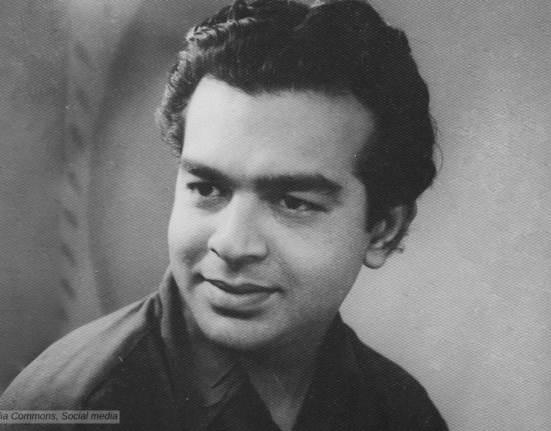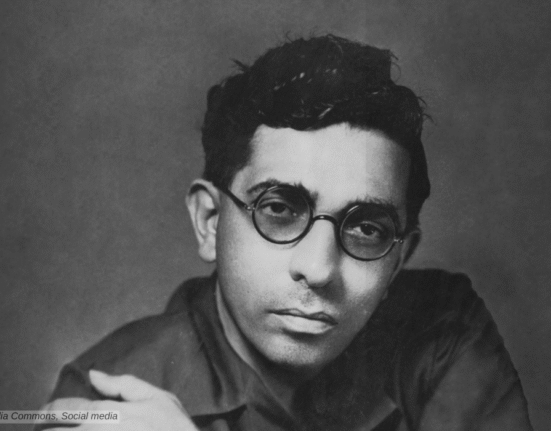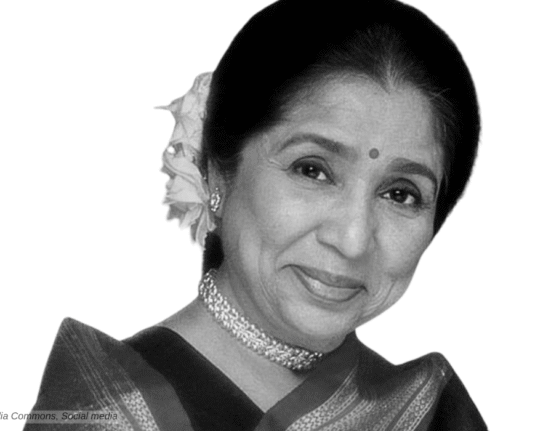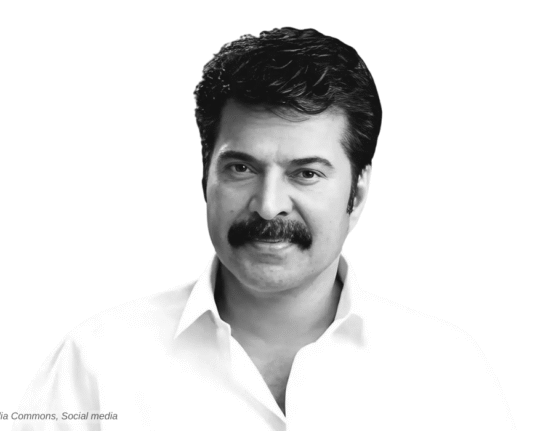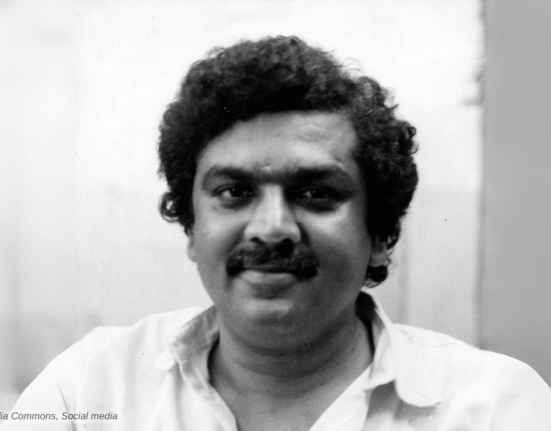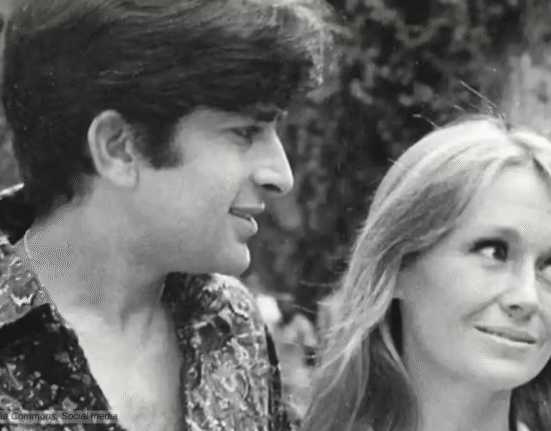Master Nissar was one of the first superstars of Talkie films and worked as a singer-actor in the 1930s. Such was his popularity that he often had to close himself in hotel rooms for fear of getting mobbed and creating a stampede. He starred in blockbuster films like “Shirin Farhad,” “Indrasabha,” “Rangila Rajput,” “The Modern Girl,” Kisan Kanya,” and many more.
Early Life and Career
Master Nissar, born “Nissar Mohammed Ali” on March 5, 1902, in Delhi. He came from a family of musicians and began his career in the arts at a young age. At ten, he moved to Bhopal and joined his uncle’s theatre company. It was there he learned his skills in singing and acting.
Young Nissar started his career by playing a girl’s character. Master Nissar got the chance to learn music from Pt. Betab and Ustaad Jhande Khan and also learned to speak fluent Urdu and Hindi, which later helped him immensely. At the age of 13, he started playing the heroine in theatre. Soon he became very famous for his beauty and voice.
Master Nissar The Star of Theatre
Nissar moved to Bombay and join a Parsi Theatre Company. At the company, he continued to play the heroine until his voice changed and he started showing manly features. Master Nissar makes a successful transition into male characters. It was a rare feat for an actor who was typecast for playing a female.
His play, Laila Majnu, was especially notable because he played Majnu with such ferocity that in a single show he had to perform his dying act multiple times. Master Nissar, who never set foot in a school, had a wonderful memory and was famous for memorising dialogues with perfect diction just by listening to them. Many of his plays, including “Shakuntala,” “Laila Majnu,” and “Shirin Farhad,” were later adapted into films.

Master Nissar On Screen


Nissar’s big break came when he moved to Calcutta and joined Madan Theatres. It was the time when major studios were working on making talkie films. On the one hand, Ardeshir Irani of Imperial Film Company was working on Alam Ara (1931) in Bombay.
In Calcutta, Madan Theatres was working on their first talkie, “Shirin Farhad.” Master Nissar was the first choice to play Farhad. Shirin was played by Jahan Ara Kajjan, who was called specially from Bhagalpur. The film, directed by J.J. Madan, was released a few months after “Alam Ara,” making it India’s second talkie film.
The film had the music of Brijlal Verma, and the lyricist was Agha Hashar Kashmiri. The film’s songs sung by Nissar, like “Woh Mukkadar Na Raha, Woh Zamana Na Raha,” “Lab Pe Aahe Nahi, Shikvaa Nahi Faiyaad Nahi,” “Maseeha Tamasha Dikhaye Chala Ja,” and “Char Din Ke Yeh Zindagani Hai” became a rage all over India, establishing him as the top actor of the time. The pair of Nissar and Jahan Ara also became very popular, and they acted in eight films together.
The First Superstar
In 1932, Nissar and Jahan Ara Kajjan starred in Jamahedji Jehangirji Madan’s “Indersabha.” The film is famous for its record for most songs (72) in a single film. Throughout his career, Master Nissar worked in 75 films, playing the lead in 45 of them. Nissar went on to work with all the famous actresses of the time, like “Bibbo,” “Padma Devi,” “Zebunnisa,” “Haseena,” “Kanta,” and “Sardar Akhtar.”
After the phenomenal success of his early films, Nissar became the highest-paid actor of that time and went on to star in films like “Shakuntala (1931),” “Laila Majnu (1931),” “Gulru Zarina (1932),” “Bilwamangal (1932),” “Afzal (1933),’ and others.
Nissar moved to Bombay in 1933 and joined Bhavnani Productions at a salary of Rs. 3000 per month. Some of his films from that period include “Maya Jaal (1933),”, “Rangeela Rajput (1933),” “Sair E Paristan (1934),” “Shah E Behram (1934),” “The Modern Girl (1935),” “Johar-E-Shamsheer (1935),” “Bahare Sulemani (1935),” and “Misar Ka Khazana (1935),” among others.

Other Work and Decline
He also worked with Ardeshir Irani in the films “Punjab Lancers (1937).” He also starred in Irani’s the first colour film from India, “Kisan Kanya (1937),” under the banner of Imperial Pictures. These were the last two films in which he played the lead actor.
In the late 1930s, his career saw a decline due to various reasons, the details of which are not available. The popular belief is that the rise of new stars like K.L. Saigal, Ashok Kumar, and Surendra, along with changing scenarios and politics between various studios,. Not much is known about his life in the 1940s, but he appeared in a few films as a character in the 1950s and 1960s.

Dilip Kumar was a big fan of Master Nissar and even considered Nissar an inspiration for his own natural acting style. Due to this, Nissar gets a few roles in Dilip Kumar’s films. Master Nissar is featured in many well-known films as a qawwal, like “Azaad” (1955) and “Barsat Ki Ek Raat (1960), etc.
In a heartbreaking incident, Sahir Ludhianvi found him on a roadside, reportedly begging. On recognising him, he took him to B.R. Choopra’s office, where he cast him as the on-screen lead singer in the qawwaali “Aaj Kyon Hum Se Parda Hai” in the film ‘Sadhna’ (1958). He went on to work in Chopra’s films like Dhool Ka Phool (1959)” and “Dharmputra (1961).”
Later Years and Death
We have seen him in very small roles in films like “Darogaji (1949),” “Pyar Ki Baten (1951),” “Boot Polish (1954),” “Azaad” (1955),” “Kohinoor (1960),” “Leader (1964),” “Char Dervesh (1964),” and “Chhoti Chhoti Baatein (1965).”
During his peak years, he learned massaging as a hobby. In his last days, this skill helped him survive, as he worked as a masseur to earn a few rupees occasionally. Film historian Isak Mujawar wrote about him in his book “Flashback II” and mentioned his roles as a masseur in Bimal Roy‘s “Do Bigha Zameen” and Hrishikesh Mukherji’s “Guddi.” In Guddi, a very frail man was shown massaging Om Prakash. Dharmendra tells Guddi (Jaya Bhaduri), “Do you know who he is? He is Master Nissar, once a great actor who was popular and very rich.” The film line is such that richess-to-rags stories are very common here.”.
Master Nissar passed away on July 13, 1980, in Mumbai, leaving behind a legacy as one of the early stars of Indian cinema. It was said that he was a proud man and never had any bad habits. It was his old age, a lack of close relatives, and not having proper work were the causes of his bad condition.
Although Nissar married four times, all his wives either separated from him or passed away. This once-famous star, who enjoyed fame, wealth, and a devoted fan following, spent his final days in misery and poverty. He lived in a neglected, pitiable condition in a room in a Kamathipura chawl, with only a few pots and a box of photographs. In his final days, Master Nissar, the heartthrob of the masses, was seen polishing shoes on footpath and begging on the roads.
Master Nissar on IMDB



